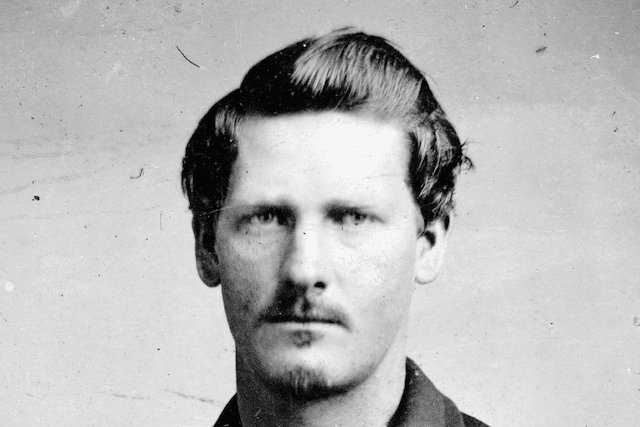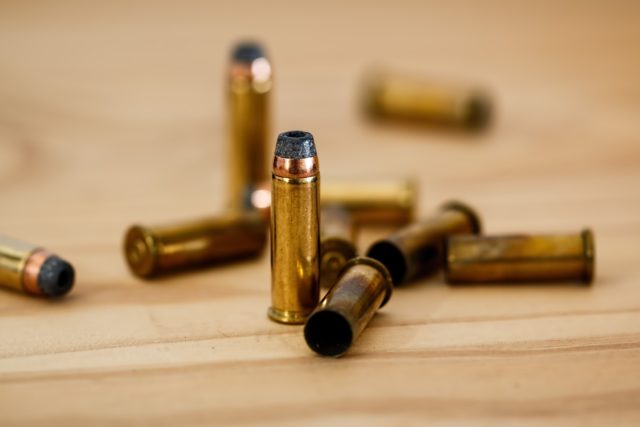Most modern societies rely on the police to maintain law and order, but sometimes people feel like the wheels of justice are turning too slowly, so they decide to take matters into their own hands. These people are known as vigilantes, and here are some of their stories:
10. Phoenix Jones
Given how popular superhero movies are in today's society, it's no surprise that some people have decided to don the mask and costume and become crime fighters. Perhaps the most famous of all is Phoenix Jones , the now-retired alter ego of MMA fighter Ben Fodor, who roamed the streets of Seattle, Washington, looking for lawbreakers.
For Fodor, it all started in 2011, when he donned a ski mask to stop a public attack. From there, the costume gradually became more and more elaborate until his new character, Phoenix Jones, had a full superhero costume, though Fodor wisely replaced the traditional spandex and underwear on the outside with body armor and body armor. Soon, Jones had his own little Justice League, Superhero Movement Rainy City . They mostly patrolled the streets of Seattle, trying to keep crime in check, although Jones himself was usually more active in his approach to fighting crime. He was even detained by police on several occasions for being "overly enthusiastic" in using pepper spray on suspected criminals.
Fodor retired from crime fighting several years ago, and most recently he has been in the news for various reasons after being arrested for drug charges for allegedly selling MDMA to an undercover police officer.
9. Alaskan Avenger

Jason Vukovich had a rough childhood. Born and raised in Anchorage, Alaska, he was the victim of both physical and sexual abuse at the hands of his stepfather. As is often the case in such tragic cases, he ran away from home as a teenager and wandered the country, racking up a lengthy list of petty crimes and misdemeanors. At some point, Vukovich returned to Alaska as an adult, but his run-ins with the law continued.
In 2016, Vukovic decided he might as well target people like his stepfather. He got into sex offender registry Alaska and compiled a list of men convicted of child sex crimes. He had three names, and he paid them a visit in late June of that year. He beat and robbed the first two, but seriously escalated the violence with his third victim. Vukovich felt the man hadn't paid enough for his crimes, so he beat the guy senseless with a hammer, all the while proclaiming himself an "avenging angel" » there to administer justice.
Vukovich was arrested shortly after and sentenced to 28 years in prison on various counts of assault and robbery. As is often the case with vigilante justice, his arrest sparked debate about the merits of such street justice, and fans of the "Alaskan Avenger," as he became known, are still campaigning on his behalf for a lighter sentence.
8. Bald Nobbers

In the 1880s, the Ozark region of southwest Missouri was a dangerous place. As a border state during the Civil War, Missouri saw a lot of bushwhacker activity that didn’t really end with the war. Jesse James and his gang were famously bushwhackers who acted like nothing had changed and were just outlaws, but they weren’t the only ones. People needed someone to stand up to these bushwhackers, and that led to the emergence of… Bald Nobbers .
So they definitely win the prize for 'stupidest name for a vigilante group', especially if you're British and the word 'pen' means something else entirely. But the Bald Knobbers were no joke. Founded by a man named Nat Kinney , they originally numbered only a dozen or so, but within just a few years their numbers had increased to hundreds, and they could be recognized by the dark horned hoods they wore.
At first, the Bald Knobbers were self-defense against the outlaws and criminals who roamed Missouri, but over time they became as bad, if not worse, than the people they once hunted. As their power grew, so did their violence, and the Bald Knobbers were believed to be responsible for several dozen murders and hundreds of beatings.
It got to the point that a new group of vigilantes appeared, Anti-Bald Knobbers , which responded to violence with violence. The original group gradually disintegrated towards the end of the decade, after several Bald Knobbers were sentenced to death and myself Nat Kinney was killed by a rival.
7. Bamberski case
In July 1982 Andre Bamberski received news that his teenage daughter Kalinka had died of suspicious causes, possibly at the hands of her stepfather, a doctor named Dieter Krombach. Bamberski wanted justice, but there was a catch - he lived in France, and his daughter and her would-be killer lived in Germany.
Bamberski tried to appeal to the German legal system, but felt hampered by bureaucratic red tape. Ultimately, Germany's highest court ruled that there was insufficient evidence to conclude that the doctor had caused Kalinka's death intentionally or through negligence.
Undeterred, Bamberski spent the 1990s lobbying for Krombach to stand trial in France, and in 1995 he got his wish as the doctors were tried in absentia and found guilty of " deliberate violence , which resulted in unintentional death." The court largely accepted Bamberski's suspicion that Krombach accidentally killed Kalinka with anesthesia when he actually intended to knock her unconscious and rape her.
Back in Germany, the doctor lost his licence after several women accused him of drugging and raping them, but at least he was still free. Germany had already said it would not extradite him to France, so Bamberski got creative. In 2009, French police in Mulhouse found an old man tied up, gagged, beaten and left in the street. It was Krombach who claimed that three men kidnapped He was in Germany, transported across the border and abandoned in France.
And that's what happened. Bamberski even admitted that he hired the men and got one year probation Meanwhile, Krombach was treated for his injuries and then jailed, ending Bamberski's 30-year quest for justice for his daughter.
6. Vigilantes from San Francisco

The California Gold Rush, which began in the late 1840s, caused an explosion in local population as more and more people arrived each day in hopes of striking it rich. Within two years, California population increased from 15,000 to 250,000, and most of the people settled in San Francisco, a city with a modest population of 1,000 that by 1852 would receive 36,000 arrivals.
With such unchecked growth, crime was bound to rise, and in the early 1850s, San Francisco was overrun by a gang of Australian immigrants known as the Sydney Ducks. Eventually, the locals said, "Enough is enough," and in 1851 they formed what would eventually become the largest lynch mob movement in American history - the San Francisco Vigilance Committee.
And the committee wasn't messing around. It all started with the hanging of a Sydney Duck wanted for grand larceny. Soon enough, their ranks numbered in the hundreds, outnumbering California's nascent police force, which was simply ill-equipped to deal with vigilantes on such a large scale. After hanging three more people and running dozens more out of town, the committee felt it had gotten its message and disbanded, only to reconvene in 1856 after the murder of newspaper editor James King by a corrupt political opponent named James Casey .
This time the committee was even larger - about 6000 members at his peak—and again, he didn't shy away from powerful enemies. Casey wasn't just a petty criminal. He was a politician installed in an important position, with powerful friends, but that didn't matter. The mob kidnapped him and another man named Charles Cora, found them guilty in a sham trial, and hanged them both.
5. Subway Vigilante

If you lived in New York City in the 1980s, you no doubt heard and had an opinion about Bernhard Goetze , the so-called "Subway Avenger." On December 22, 1984, Goetz was riding the subway when he was approached by four young black men who surrounded him and asked for money. Convinced he was about to be robbed, Goetz pulled out a .38-caliber pistol and shot all four men. He fled the state but eventually surrendered to New Hampshire police nine days later.
Three of the shooting victims suffered only minor injuries, but one of them, Darrell Cabey , was shot in the spinal cord, leaving him paralyzed and with brain damage. Goetz's lawyers successfully argued self-defense, and their client was convicted only of illegal gun possession and served 250 days in jail. Ten years later, Cabey won a civil suit and was awarded $43 million, leading Goetz to file for bankruptcy shortly thereafter. However, Goetz managed to parlay his moment of infamy as a subway vigilante into minor celebrity status, culminating in an unsuccessful run for New York City mayor during the 2001 election.
4. Gary Plauche
On March 16, 1984, a man named Jeff Doucet landed at the Baton Rouge airport in handcuffs and with a police escort. He was being flown in to stand trial for the kidnapping and sexual assault of an 11-year-old boy named Jody Plauche, but he never made it to court. In fact, he never made it out of the airport.
As the camera crew recorded his arrival, the man standing by the payphones turned around, aimed a gun, and shot Dusya in the head at point-blank range. He then dropped the gun and allowed police to take him away without resisting.
It was Gary Plauche , the boy's father. Jeff Doucet's murder was broadcast live, so it's no surprise that the subsequent trial made headlines across the country. However, public opinion was largely in favor of the father avenging his son, and ultimately, so was the verdict. Plauche pleaded no contest to manslaughter and was sentenced to a suspended prison sentence and five years' probation.
3. Mother of Vengeance

In 1980, Marianne Bachmeier of Lübeck, West Germany, experienced the greatest tragedy a parent can experience: the loss of a child. Her seven-year-old daughter, Anna, was brutally murdered by her neighbor, a 35-year-old butcher named Klaus Grabowski .
In his defense, Grabowski claimed that the young woman had tried to blackmail him by threatening to say that he had molested her unless he paid up. The butcher also blamed his mental state on a hormonal imbalance, as he had undergone voluntary chemical castration in the past for previous sexual offenses.
There was no way his strategy would work, but Marianne Bachmeier decided not to take any chances. On March 6, 1981, she walked into the courtroom where her daughter's killer was being tried, armed with a pistol. Beretta 22 caliber , and opened fire on Grabowski. She fired eight shots, hitting him six times. He died instantly, and then Bachmeier calmly allowed herself to be taken into custody.
The whole country was discussing the case. Mothers of Vengeance ", as everyone debated whether her actions were justified. In 1983, Marianne Bachmeier was found guilty of manslaughter and sentenced to six years in prison, but served only three years before being released and starting a new life.
2. Vendetta.

The Gunfight at the O.K. Corral turned Wyatt Earp and his compatriots into legends of the Wild West, but it wasn't without consequences. They killed three members of the outlaw group known as the Cowboys during that shootout, and they weren't about to let it go. In two subsequent attacks, in December 1881 and March 1882, the Cowboys permanently maimed Virgil Earp and killed Morgan Earp. Apparently, the younger brother Wyatt wasn't about to sit back and let his family get killed, so he gathered a posse and headed out to vendetta .
Make no mistake, Wyatt Earp may have been a deputy marshal at the time, but it was completely unauthorized. In fact, as soon as they engaged in their first shootout in Tucson, Arizona, killing Cowboys member Frank Stillwell, warrants were issued for the arrest of Earp and his accomplices.
But the posse had no intention of stopping or giving up, and they continued their hunt in California, killing another cowboy named Florentino Cruz at a logging camp they found along the way.
The vendetta ended on March 24, when the posse caught up with the main group of Cowboys and a large-scale gunfight ensued. The Earp gang eventually retreated, outnumbered, but not before Wyatt shot and killed two more Cowboys, Johnny Barnes and Curly Bill Brocius.
After this, the vendetta squad soon disbanded and each went their own way. Although there were several arrests, none of them suffered serious consequences for their actions.
1. Skidmore, Missouri

It's not every day that an entire town comes together to protect a bloody vigilante, but that's what happened in Skidmore, Missouri in 1981.
The victim was Ken McElroy , a man most people would cross the street to avoid. Described as the "town bully," McElroy was charged with dozens of felonies, including burglary, assault, and rape. Somehow, he always managed to give the free man the slip, usually by intimidating or threatening witnesses.
His final crime was also his most egregious. In 1980, McElroy was charged with attempted murder after firing a shotgun at a 70-year-old local grocer. At first, the city breathed a sigh of relief, as it seemed McElroy might finally be behind bars, but he was convicted of a lesser assault charge and released on bail while his lawyer appealed the conviction.
On July 10, 1981, McElroy and his wife headed to D&G Tavern , his favorite dive, and began drinking. About 50 locals had gathered outside the bar, determined that enough was enough. Leaving the tavern, McElroy, without saying a word, made his way through the crowd and got into his truck. Once behind the wheel, he calmly lit a cigarette, still confident that no one would dare act against him, but this time he was dead wrong.
Two shots rang out and Ken McElroy dropped dead. As for the shooter, nobody saw anything .




